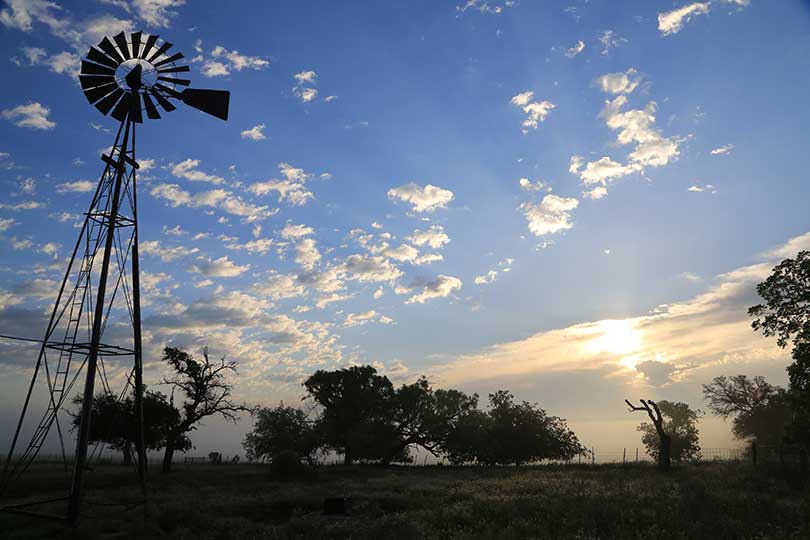By Emmy Powell
Communications Specialist
Demand for Texas rural land continues as the state’s population grows and families and individuals look for property outside the city limits, but sales activity has slowed, according to the recently published Texas Rural Land Value Trends report.
“Demand for rural property on a statewide level has continued on an upward plane, but at a slower pace than we saw post-pandemic,” said R. Mike Lansford, president of the Texas Chapter of the American Society of Farm Managers and Rural Appraisers (ASFMRA), in the latest report.
Across the state, buyers are focused on quality properties, which has led to higher average land prices.
“Texas land markets have turned a corner, going from the frenzied 2021-2022 markets to more sedate levels of activity. Buyers now focus on quality properties resulting in higher average prices even as total transactions volume has ebbed. The fourth quarter of 2023 saw annual sales volume slip 44.60% to 3,699 from the same period year-over-year,” the report said.
Sales activity has dropped significantly over the last 18 months to levels not seen since 2013, according to the report.
The 2023 Rural Land Value Trends report also noted the following:
- A total of 279,509 acres changed hands, down 61.17% over 2022.
- Total dollar volume, at $1.31 billion, declined by 59% over the prior annualized total.
- Prices increased 50.4% to $4,670 through 2023 based on fourth-quarter data.
Although the total number of sales is down, prices continue to rise.
“Total dollar volume, at $1.31 billion, declined by 59.21 percent over the prior annualized total. A total of 279,509 acres changed hands, down 61.17 percent over 2022. These results suggest that market activity has fallen below normal levels at high prices,” the report stated.
The report also looks at land prices and leasing rates for various types of property from irrigated cropland to rangeland and CRP land to timberland, as well as hunting leases.
The report covers Texas in seven regions with smaller sub-regions.
- Region 1: North Panhandle, South Plains
- Region 2: Far Wes Texas, Big Bend, Trans-Pecos
- Region 3: North Texas, Central Texas, South Central Texas
- Region 4: North Texas, Northeast Texas, Piney Woods North, Piney Woods South
- Region 5: Eastern Coastal Prairie, Southeaster Piney Woods, Southwestern Piney Woods, Brazos Bottom, Houston Area, Central Coastal Prairie, North Coastal Prairie, Bellville and Brenham areas
- Region 6: Transition Zone, Upper South Texas, Lower South Texas, Coastal Plains, Coastal Bend, Rio Grande Valley
- Region 7: Southern Grand Prairie, Central Basin, Central Blacklands, Grand Prairie, North Central Post Oaks, East Edwards Plateau, Central Blacklands, Southern Post Oaks, Eastern Hill Country, Western Hill Country a recently published land trends report.
Texas chapter members of American Society of Farm Managers and Rural Appraisers from all seven regions provide data to develop the annual market study. The annual study was created in the late 1990s in cooperation with Dr. Charles Gilliland, research economist at The Real Estate Center at Texas A&M University.
Download the Texas Rural Land Value Trends for 2023 here.


Leave A Comment